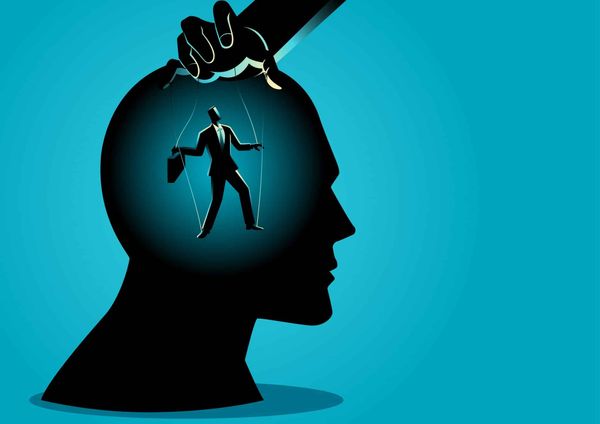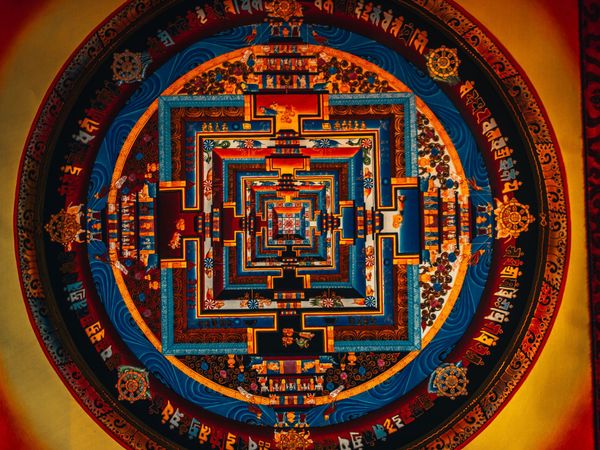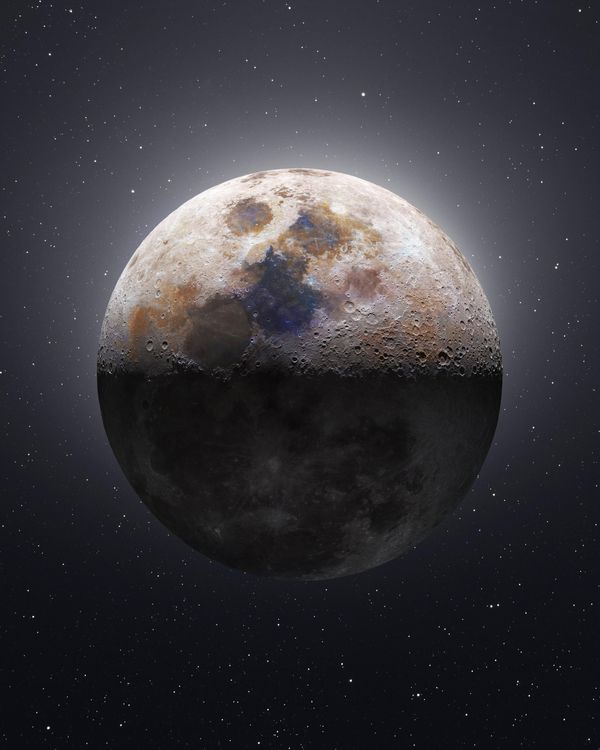Jordan Lejuwaan • • 6 min read
Food For Thought From Eisenstein: The Three Seeds

The following a story from Charles Eisenstein’s book, ‘The More Beautiful World Our Hearts Know Is Possible‘.
—
The Three Seeds
Once upon a time, the tribe of humanity embarked upon a long journey called Separation. It was not a blunder as some, seeing its ravages upon the planet, might think; nor was it a fall, nor an expression of some innate evil peculiar to the human species. It was a journey with a purpose: to experience the extremes of Separation, to develop the gifts that come in response to it, and to integrate all of that in a new Age of Reunion.
But we knew at the outset that there was danger in this journey: that we might become lost in Separation and never come back. We might become so alienated from nature that we would destroy the very basis of life; we might become so separated from each other that our poor egos, left naked and terrified , would become incapable of rejoining the community of all being. In other words, we foresaw the crisis we face today.
That is why, thousands of years ago, we planted three seeds that would sprout at the time that our journey of Separation reached its extreme. Three seeds, three transmissions from the past to the future, three ways of preserving and transmitting the truth of the world, the self, and how to be human.
Imagine you were alive thirty thousand years ago and had a vision of all that was to come: symbolic language, naming and labeling the world; agriculture, the domestication of the wild, dominion over other species and the land; the Machine, the mastery of natural forces; the forgetting of how beautiful and perfect the world is; the atomization of society; a world where humans fear even to drink of the streams and rivers, where we live among strangers and don’t know the people next door, where we kill across the planet with the touch of a button, where the seas turn black and the air burns our lungs, where we are so broken that we dare not remember that it isn’t supposed to be this way. Imagine you saw it all coming. How would you help people thirty thousand years thence? How would you send information, knowledge, aid over such a vast gulf of time? Maybe this actually happened. So, we came up with the three seeds.
The first seed was the wisdom lineages: lines of transmission going back thousands of years that have preserved and protected essential knowledge . From adept to disciple , in every part of the world, various wisdom traditions have passed down teachings in secret. Wisdom keepers, Sufis, Zen masters, Kabbalists, Taoist wizards, Christian mystics, Hindu swamis, and many others, hiding within each religion, kept the knowledge safe until the time when the world would be ready to reclaim it. That time is now, and they have done their job well. Many spiritual leaders, even the Dalai Lama, are saying that the time of secrets is over. Released too early, the knowledge was co-opted, abused, or usually just ignored. When we had still not covered the territory of Separation, when we still aspired to widening our conquest of nature, when the story of humanity’s Ascent was not yet complete, we weren’t ready to hear about union , connectedness, interdependency, interbeing. We thought the answer was more control, more technology, more logic, a better-engineered society of rational ethics, more control over matter, nature, and human nature. But now the old paradigms are failing, and human consciousness has reached a degree of receptivity that allows this seed to spread across the earth. It has been released, and it is growing inside of us en masse.
The second seed was the sacred stories: myths, legends, fairy tales, folklore, and the perennial themes that keep reappearing in various guises throughout history. They have always been with us, so that however far we have wandered into the Labyrinth of Separation, we have always had a lifeline, however tenuous and tangled, to the truth. The stories nurture that tiny spark of memory within us that knows our origin and our destination. The ancients, knowing that the truth would be co-opted and distorted if left in explicit form , encoded it into stories. When we hear or read one of these stories, even if we cannot decode the symbolism, we are affected on an unconscious level. Myths and fairy tales represent a very sophisticated psychic technology. Each generation of storytellers, without consciously intending to, transmits the covert wisdom that it learned, unconsciously, from the stories told it.
Without directly contradicting the paradigms of separation and ascent, our myths and stories have smuggled in a very different understanding of reality. Under the cover of “It’s just a story,” they convey emotional, poetic, and spiritual truth that contradicts linear logic, reductionism, determinism, and objectivity. I am not talking here about moralistic tales. Most of those carry little truth. To transmit the second seed, we must humble ourselves to our stories, and not try to use them for our own moralistic ends. They were created by beings far wiser than our modern selves. If you tell or transmit stories, be very respectful of their original form and don’t change them unless you feel a poetic upwelling. Pay attention to which children’s literature has the feel of a true story. Most recent kids’ literature does not. You can recognize a true story by the way its images linger in your mind. It imprints itself on the psyche. You get the feeling that something else has been transmitted alongside the plot, something invisible. Usually, such stories bear rich symbolism often unknown even to their authors . A comparison of two twentieth-century children’s books illustrates my point: compare a Berenstain Bears story with How the Grinch Stole Christmas! Only the latter has a psychic staying power , revealing the spirit of a true story, and it is rich with archetypal symbolism.
The third seed was the indigenous tribes, the people who at some stage opted out of the journey of separation. Imagine that at the outset of the journey, the Council of Humanity gathered and certain members volunteered to abide in remote locations and forgo separation, which meant refusing to enter into an adversarial, controlling relationship to nature, and therefore refusing the process that leads to the development of high technology. It also meant that when they were discovered by the humans who had gone deeply into Separation, they would meet with the most atrocious suffering. That was unavoidable.
These people of the third seed have nearly completed their mission today. Their mission was simply to survive long enough to provide living examples of how to be human. Each tribe carried a different piece , sometimes many pieces, of this knowledge. Many of them show us how to see and relate to the land, animals, and plants. Others show us how to work with dreams and the unseen. Some have preserved natural ways of raising children, now spreading through such books as The Continuum Concept. Some show us how to communicate without words— tribes such as the Hadza and the Pirahã communicate mostly in song. Some show us how to free ourselves from the mentality of linear time. All of them exemplify a way of being that we intuitively recognize and long for. They stir a memory in our hearts, and awaken our desire to return.
In a recent conversation, the Lakota Aloysius Weasel Bear told me that he once asked his grandfather, “Grandpa, the White Man is destroying everything, shouldn’t we try to stop him?” His grandfather replied, “No, it isn’t necessary. We will stand by. He will outsmart himself.” The grandfather recognized two things in this reply: (1) That Separation carries the seeds of its own demise, and (2) That his people’s role is to be themselves. But I don’t think that this is an attitude of callousness that leaves the White Man to his just desserts; it is an attitude of compassion and helping that understands the tremendous importance of simply being who they are. They are keeping alive something that the planet and the community of all being needs.
By the same token, our culture’s fascination with all things indigenous is not merely the latest form of cultural imperialism and exploitation. True, the final stage of cultural domination would be to turn Native ways into a brand, a marketing image. And certainly there are some in my culture who, sundered from community and from a real identity, adopt Native pseudo-identities and pride themselves on their connections to Native culture, spirituality, people, and so forth. Underneath that, however, we recognize that the surviving First Peoples have something important to teach us. We are drawn to their gift, to the seed that they have preserved until the present time. To receive this seed, it is not necessary to participate in their rituals, take an
animal name, or claim a Native ancestor, but only to humbly see what they have preserved, so that memory may awaken. Until recently, such seeing was impossible for us, blinkered by our cultural superiority complex, our arrogance, our apparent success in mastering the universe. Now that converging ecological and social crises reveal the bankruptcy of our ways, we have the
eyes to see the ways of others.
The seeds of Reunion are sprouting everywhere. That which was hidden for millennia is coming to light. Soon, fertilized by the detritus of our decaying civilization, the sprouts will mature, bloom, and bear fruit. Our job is first to receive them, then to spread them everywhere and to guard and foster them with every ounce of our love.








